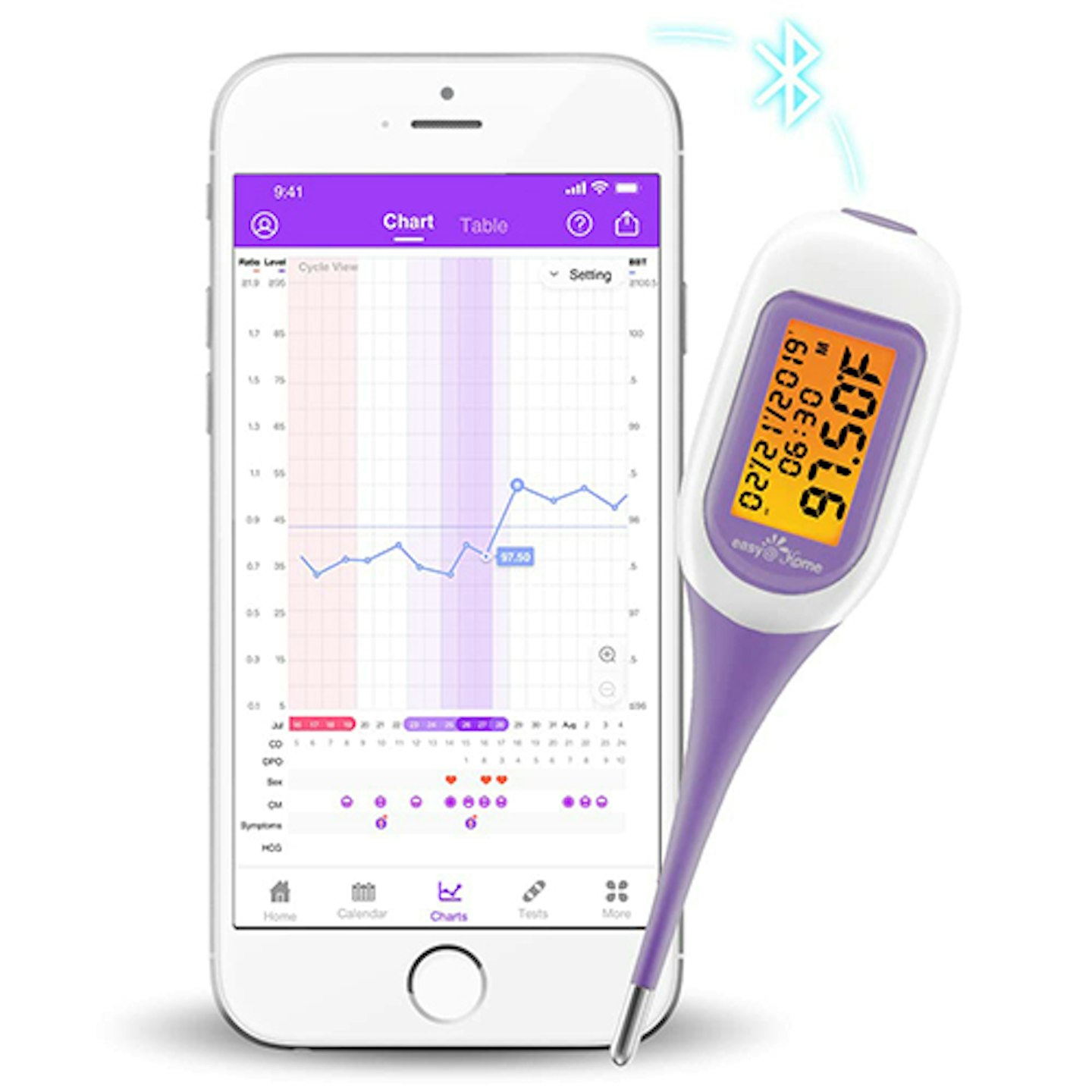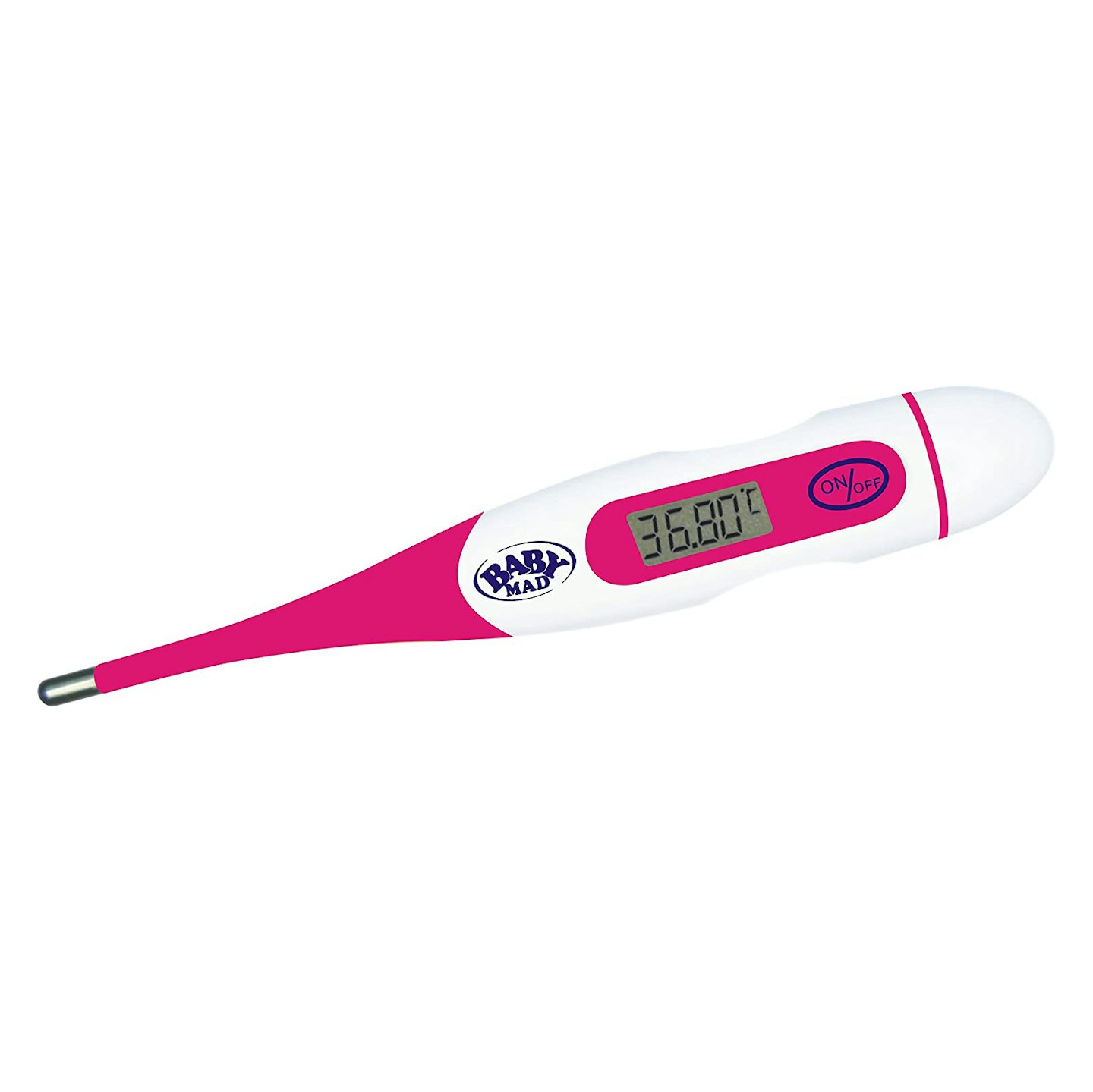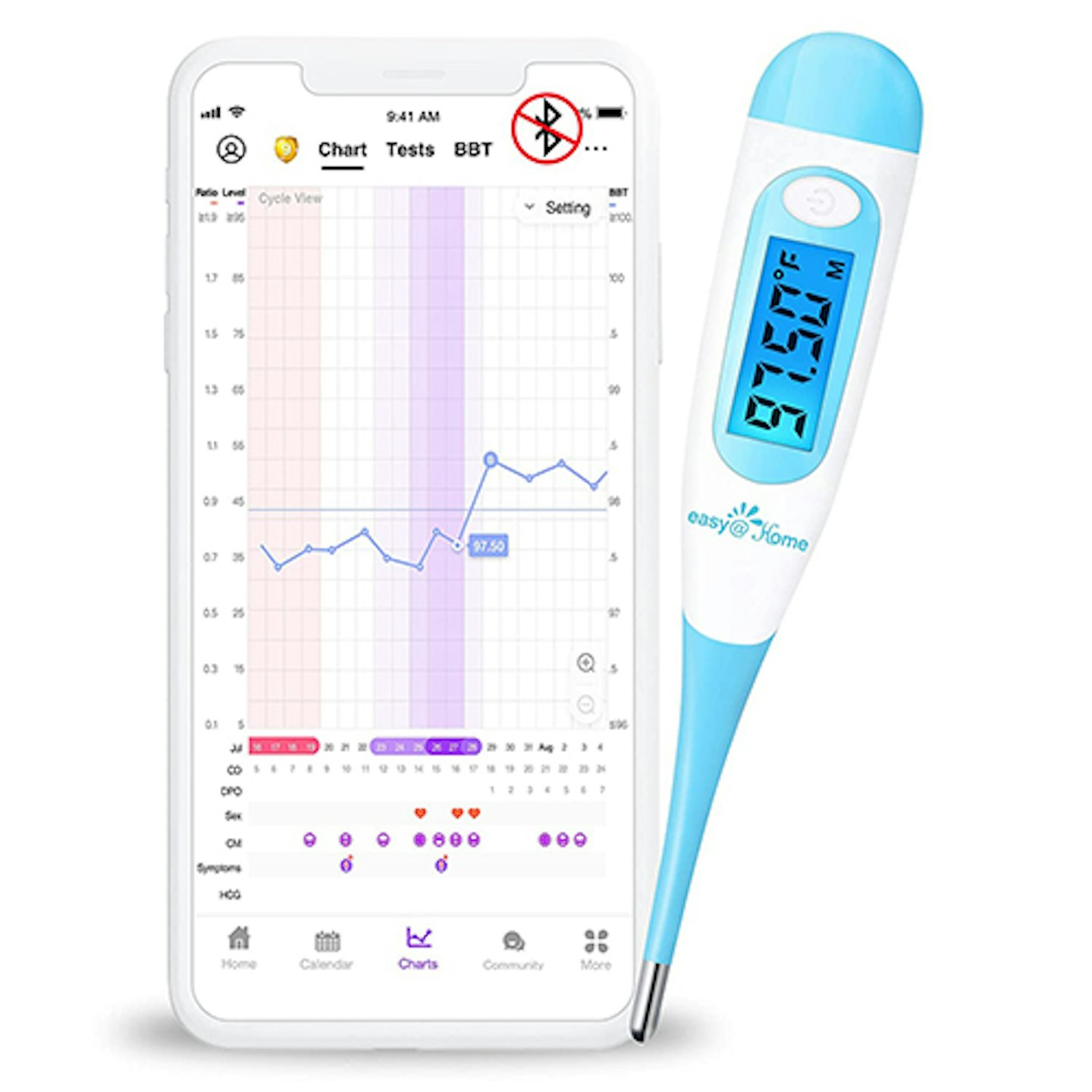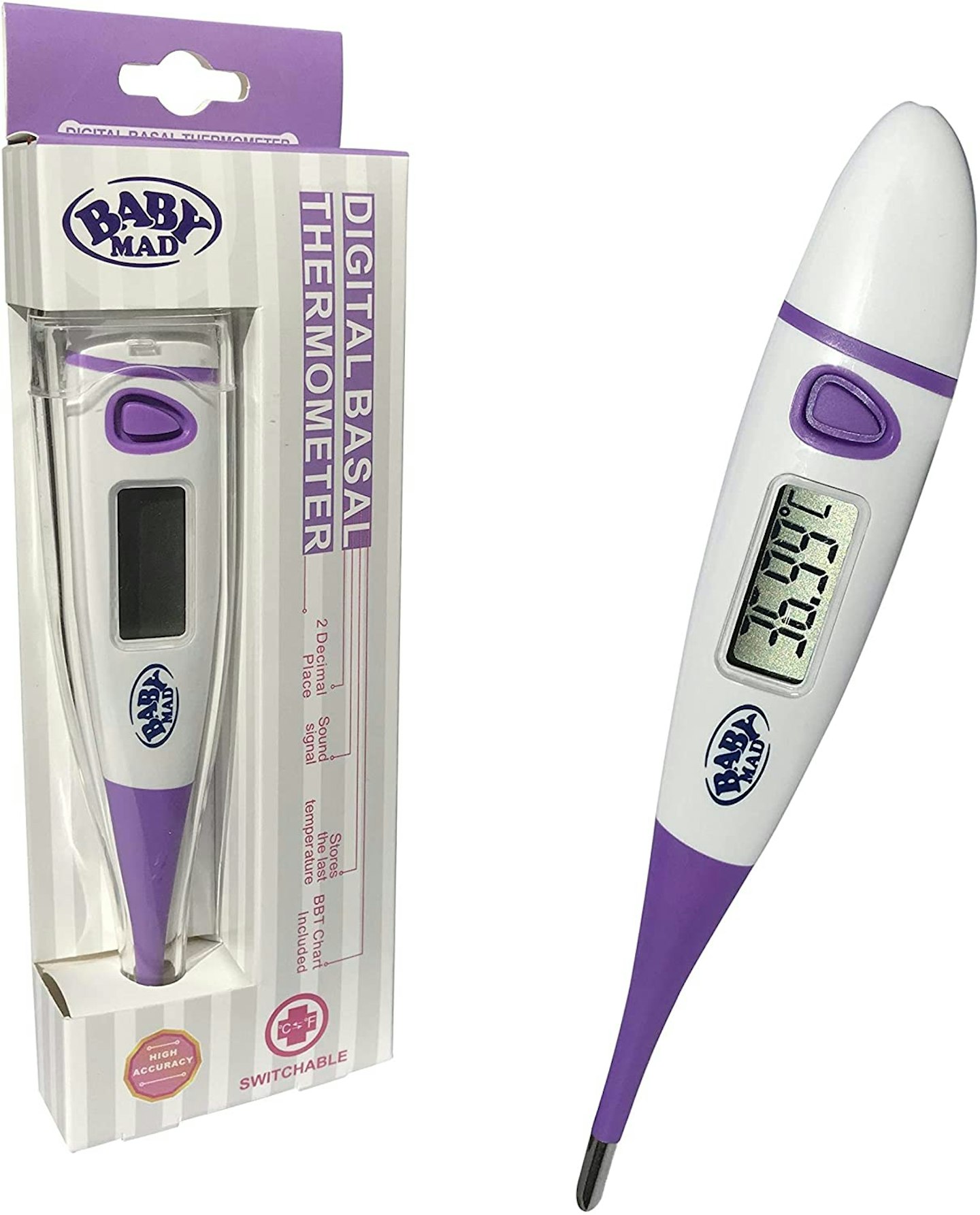Using a basal thermometer to take your body temperature and using ovulation predictor kits are two ways to help work out when your body might be ready to conceive - here we find out more and suggest ones to buy.
When you know you’re ready to try to conceive (TTC), you probably want plenty of kit to help you along the way - as well as the sex. No wonder we all love a good at-home piece of tech. Basal body temperature and ovulation predictor kits are the most popular, but do they work?
If you're keen to use a basal thermometer to help you plot your menstrual cycle and try to help you find out your most fertile days, we've found the best basal thermometers to buy today:
The best basal thermometers to buy today
Best for download

Description
This bluetooth-enabled basal thermometer connects to an app, Premom, that you download onto your phone, so you can keep an eye on your results and track your fertile days with just a tap on your screen. It’s easy to see your menstrual patterns with the graph on the app. The thermometer itself is easy to use with a large screen for easy reading.
Pros
- It only takes about 1.5 - 2 minutes to read result.
- Large screen with backlit for reading in the dark easily.
Cons
- Quite pricey.
Best for accurate reading

Description
A simple and straightforward basal thermometer, with no frills but giving you an accurate reading of your basal temperature to two decimal places. Does what it says on the tin without any fuss. It emits a little tone when the final temperature reading is ready.
Pros
- Easy-to-read liquid crystal display
- Mercury-free
- Memory Function
- Tone sounds when final temperature is reached
- Memory & Fever Alarm
Cons
- Only for babies
The best for tracking

Description
This basal thermometer works with the Premom app on your phone, making it easy to track and monitor your cycle without having to plot your graph with paper and pencil. It’s not Bluetooth enabled, however, so you have to manually enter the details on the app yourself, which is why the price is lower than others.
Pros
- Waterproof
- Flexible thermometer tip for easy-to-use and clean
- Signals the completion of the test
- No need to count timer
Cons
- Non-bluetooth
Best for tracking your fertile days
Description
A straightforward basal thermometer, but this has the added bonus of a BBT (Basal Body Temperature) chart for you to complete manually. The kit also includes 30 ovulation test strips, giving you another way to track and monitor your fertile days – most other basal thermometers don’t include these.
Pros
- Tone sounds when final temperature is reached
- Memory and fever Alarm
- Ovulation Basal Body Temperature chart included
- Also includes 30 x Ovulation Test Strips - a further aid to identify your fertile time and maximise your conception chances.
Cons
- Quite pricey
Description
Handily comes with a hard case to store the basal thermometer safely. This basal thermometer is easy to use and affordable. It also comes with a chart to complete manually to plot your results.
Pros
- Temperature readings are available in Fahrenheit or Celsius C/F
- The soft flexible thermometer tip is designed for comfort and safety
Cons
- Not accurate enough to detect ovulation
What is your basal body temperature?
This is essentially your temperature when you first wake up in the morning before you start doing any activity at all. Hormonal changes throughout the month cause this to vary by tiny amounts and regularly plotting it can help you track ovulation.
How do I take my temperature?
Firstly you need a basal thermometer, which is more sensitive than the type you put on your forehead or in your ear when you have a fever, and can be bought from pharmacies. Some come ready with graphs to plot your daily results on, while others connect to apps on your phone. For a basal thermometer to work, you have to take your temperature at the exact same time each morning, when you have just woken up and before you have drunk or eaten anything.
Plotting the results
You're looking for a temperature spike of around 0.2-0.4 degrees C for three days in a row compared with the previous six days. This suggests you have ovulated. You will need to do this for a few months before you start to spot a pattern and use that to predict when your next fertile period will be.
Downsides to basal thermometers
This method requires dedication, and all sorts of factors could skew your results, such as forgetting to take your temperature one day, or being ill or taking painkillers such as paracetamol. Also, it relies on your cycle being very regular, which may not be the case for many women.
Helen Kendrew, matron at the Bath Fertility Centre, says this is not a method that fertility experts would recommend: ‘Fifteen years ago we were saying this is old hat, it is not very reliable and just adds another layer of stress.’
Ovulation predictor kits
Ovulation predictor kits are more expensive than charting basal body temperature but are more accurate and you might find them easier to use. They measure a level of hormone called luteinizing hormone (LH) in your urine to tell you when ovulation is imminent and give you a 24-36 hour warning that it is the time to have TTC sex.
Again they are not ideal for those with an irregular cycle, as you may go through a lot of tests before hitting on that ovulation window. It’s also important that you don’t get too obsessed and stressed out by focusing on aiming on having sex at a specific time rather than just once or twice a week.
Mrs Kendrew adds: ‘Remember that over-the-counter predictor kits cannot tell you whether ovulation actually occurred, they just predict that it did.’
You can also work out when you're most fertile by using an ovulation calculator. Ovulation calculators work by working out where in your cycle you are and when you’re likely to ovulate – and therefore conceive.


